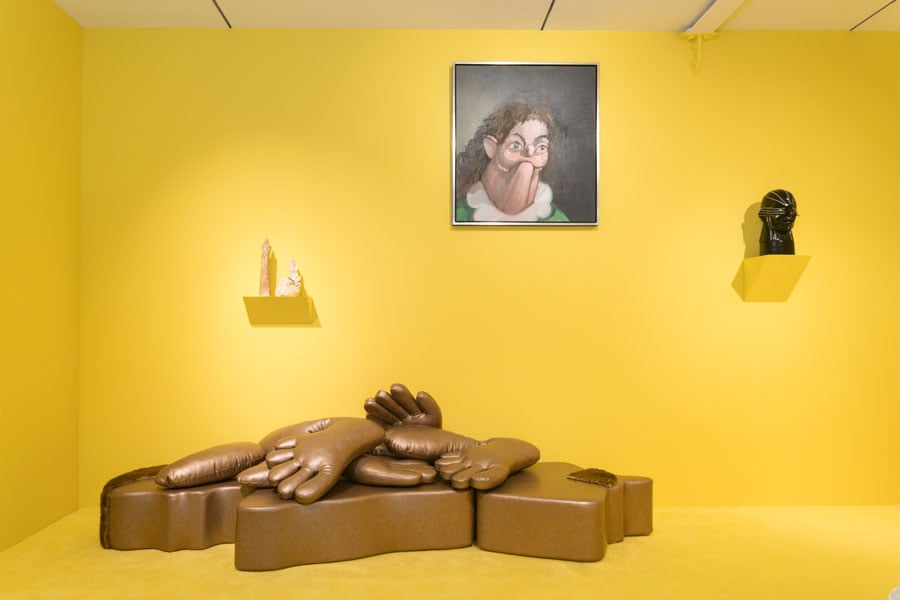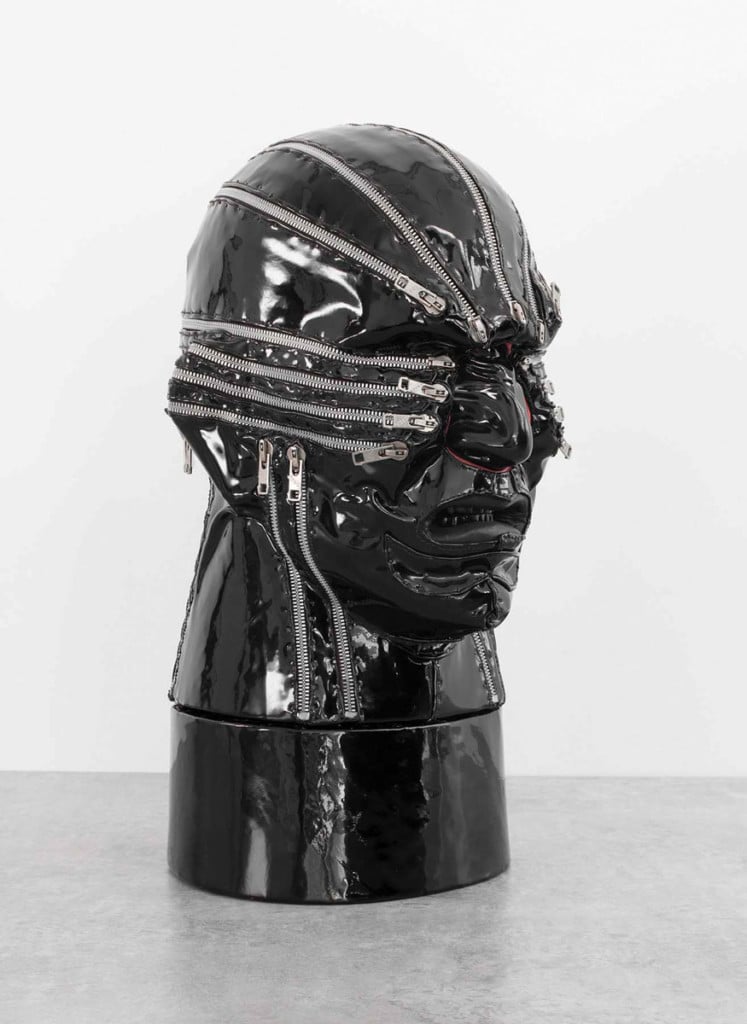
January 13, 2020
A New Show at Friedman Benda Challenges Viewers to Redefine the Meaning of Comfort
Organized by Omar Sosa, the exhibition leans on the idea that comfort is relative, socially constructed—and often, exclusive.

I have never occupied a yellow room without thinking of Charlotte Perkins Gilman’s 1892 short story, The Yellow Wallpaper. In it, we find a female narrator in an uncomfortable situation made worse by the interiors she occupies—the vacation home where her husband eagerly awaits the passing of her postpartum depression, the room in which she is confined and isolated from her work as a writer, and the prison she begins to visualize within the patterns of the wallcovering.
Stepping into the current exhibition at New York City’s Friedman Benda Gallery, Comfort, which opened January 9, “yellow” may be the first thing that comes to mind, with its brightly painted walls and matching carpeted floors. But the color is not the only correlation between the story and the exhibition, which was curated by Apartamento’s Omar Sosa. Gilman’s narrator’s source of discomfort wasn’t so much the color of the room but the boundaries that had been imposed on her as a woman within public and domestic spheres. While comfort is often seen (at least in the West) as something that can be measured empirically (thermostat degrees, thread count), the works in this exhibition lean on the idea that comfort is more so a concept that is both psychologically and socially constructed.

“All of the inventions of the last century didn’t liberate the woman,” Sosa explains. “They made comfort available to the middle classes, but it actually meant more cleaning and cooking for women. The one who benefited the most from ‘comfort’ was men.” Through a landscape of utilitarian furniture, paintings, and sculpture, the exhibition explores the tension between comfort’s various connotations and subjectivities while also inviting the viewer to question their own definitions of the word.
An off-balance bookshelf by Ettore Sottsass, a leather-bound, bondage-evoking head by Nancy Grossman, and a grotesque “imaginary portrait” by George Condo elicit more discomfort than anything. In fact, the majority of the works challenge preconceived notions about how we live and what objects we should surround ourselves with. Sosa hopes they encourage viewers to “rethink and reconsider their houses and the way that societal norms and IKEA have told them to live.”

In an essay commissioned to accompany the exhibition, “Comfort Dissidence,” the architect and artist Pol Esteve Castelló provides a short history of comfort over the centuries: “The more comfortable the house and the city is, the more prescribed its inhabitants’ behavior,” he writes. He also cites Paul B. Preciado’s 2016 “Casa Vacía,” which recounts the philosopher’s life living in an empty house, using it as a metaphor for his experience with gender transition. Preciado says, “IKEA is for the art of inhabiting what heterosexual normativity is for the desiring body.” In both Preciado and Castelló’s writings, comfort is normativity and convenience—a lamp next to the bed, a TV in front of the sofa, two full-size rooms with one queen-size room—a stage set for the traditional family.
For Castelló, pleasure can be a “liberating instrument” against the constraints of comfort. And the exhibition doesn’t lack pleasurable moments. A young woman leisurely laying in a pink cloud of cotton candy in a Will Cotton painting brings about some of these feelings. But for Sosa, these two distinct ideas should not be conflated, “I don’t see pleasure in relation to comfort. In a sense, comfort is the opposite of pleasure.”
In other words, comfort can numb our senses and render us passive participants in the way we interact with our surroundings, while pleasure activates our consciousness, “awakens new understandings of reality,” and allows us to feel. In Aldous Huxley’s 1932 novel Brave New World, one of his characters calls for action: “I don’t want comfort. I want God, I want poetry, I want real danger, I want freedom, I want goodness, I want sin.” Yellow walls may give you a headache, but maybe that’s better than not feeling anything at all.
Comfort at Friedman Benda runs through February 15, 2020.
You may also enjoy “This Exhibition Aims to Capture the Diversity of Human Health.”
Would you like to comment on this article? Send your thoughts to: [email protected]











